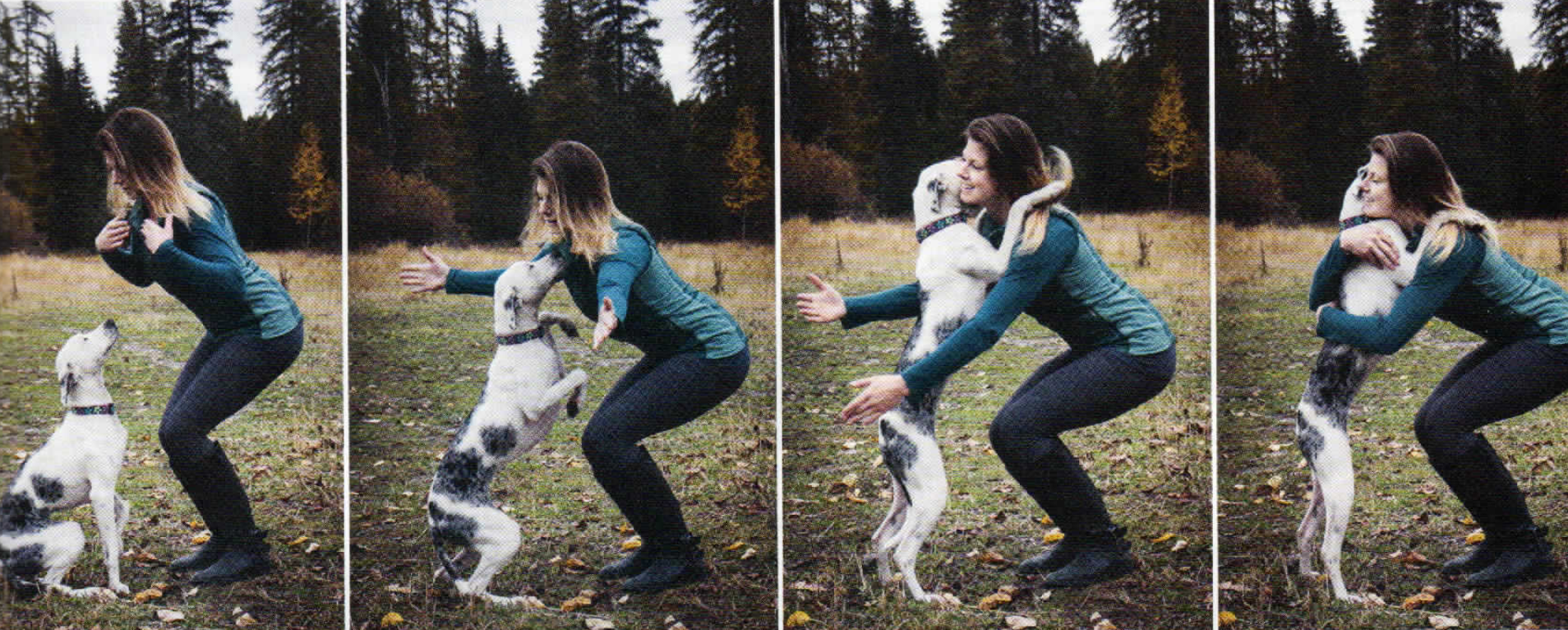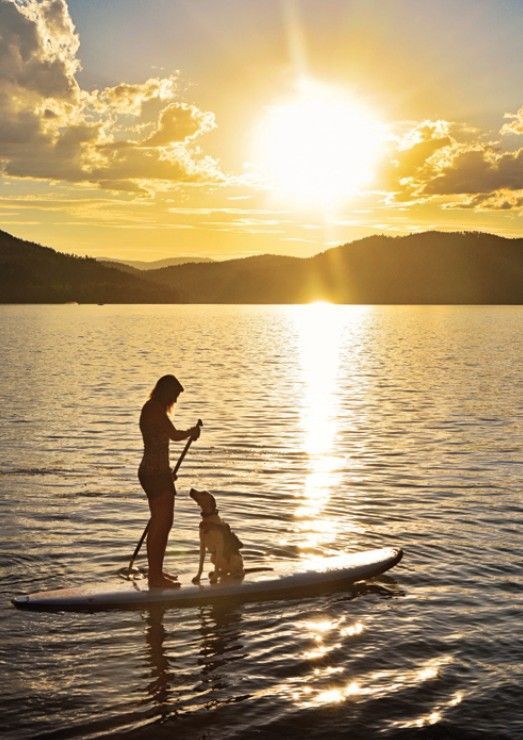Train Your Dog to Hug

By Randy Bruck & Louise Shye
Photography by Randy Bruck.
Training your dog to hug can be very rewarding to both dog and owner. From a human definition, a "dog hug" is very cute and rewarding. But the method of training a dog to hug, from the dog mind, requires structure, repetition, positive reinforcement and practice. Many people see dogs do tricks and are amazed that a canine is capable of such abilities. But dog tricks require a lot of firm direction, physical control and direct voice to manifest the concept and physical consistency. Most dog trainers frown upon dogs putting their paws on people. But for this exercise, we will allow the "paws up" on a permission basis. This one is only for adults with good dog control! Also, please clip your dog's nails prior to practice!
All dogs learn, or become trained, by com- bining and associating concepts or stimuli together in real time, in repetition and prac- tice; followed by positive reinforcement at the end. All tricks, like teaching your dog to sit for the first time, require the same word "sit," attached to physically managing the dog's body to the position of sit, followed by praise or a treat. Nuff said! With a little prac- tice, direction and motivation; all dogs have the ability to perform tricks. Keep in mind, even little dogs like "Miss Feona's Flying Poo- dles" from the circus, were great at perform- ing tricks.
Step 1: Focus
Release energy first. Train second. Your dog needs to be calm and relaxed prior to a train- ing exercise. A little walk or ball play will release excess energy and ensure a focused training session. Make sure to be in a quiet area with no distractions. Have 25 or so small treats ready.
Step 2: Voice
Canine training requires a firm, direct voice. You cannot ask, negotiate or coax a dog to do something. A trustworthy pack leader needs to be commanding and tell a dog how to per- form a new task. Many working breed dogs need a "boss" to initiate new tasks as a "job" or else they will not be motivated to do it. So, instill trust by "being the pack leader!"
Step 3:
Command & Physical Control Association Always start any exercise with the attention- getting command of "sit." Make sure your dog is focused on you. Lean down, tap your shoulders with your hands (this is the con- "hug!" Grab your dog's paws gently and place nective hand sign) and use the direct voice of them on your shoulders. Say "Good Boy!" and return your dog's paws manually to the ground and say "sit" firmly. Give them a treat. Repeat this process 20 times, always starting in the standing position and with the canine sitting by command.
26 www.406bark.com
Step 4: The Stand
After Step 3, which was performed from a crouched position, it's time for "the stand." Repeat Step 3, but this time, hold your dog's paws on your shoulders and stand to a prone position, pulling your dog up with you gently and slowly. You can "hug" your dog at this time, but always return him to a "sit" position. by command at the end with a treat or prais- ing voice. Repeat this step 20 times.
After your dog has the "hug" down pat, make sure it is only performed by permission. If your dog gets a little ambitious and tries it on his own, correct him sternly and make him "sit" to designate specifically when the trick shall be allowed. Have fun with the "HUG!
хохо
Louise Shye is available for private in-home dog obedience training sessions. (406)309-1900
Randy Bruck, owner of Randy's Savedog Hidden Fence Systems, specializes in containment and canine behavioral issues. (406) 249-3143

